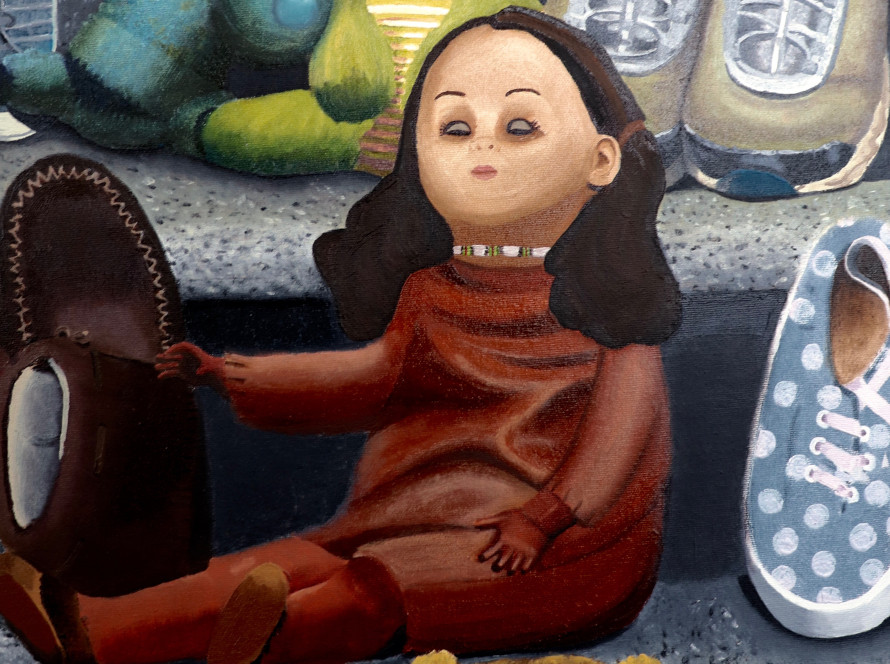Lost and found again
MHC Gallery exhibition explores grief through art
Barb Bottle and Briony Haig aren’t afraid to ask the big questions. In their latest exhibition, the artists will explore one of the most universal, albeit difficult experiences: grief both personal and political.
From Jan. 20 to March 4, the MHC Gallery, located on the Canadian Mennonite University (CMU) campus, will show Grief and Grievance: Sites of Change. The exhibition’s works centre on themes of loss, grief, struggle and how these experiences can alter perceptions.
Bottle and Haig spent their lives as creatives but took a break and have only recently begun showing their art again in the last five years.
Haig is a sculptor and painter who has also shown her work through the Mentoring Artists for Women’s Art (MAWA) after working as an art teacher at Elmwood High School for 14 years.
Haig’s work deals with grievance, told through paintings exploring her experience at protests.
“I went to an anti-fascist protest at the U of W a couple of years ago, and there were these four young women, and they dressed up as clowns. They had this little whiteboard sign that said ‘clowns against fascism,’ Haig says. “It just tickled me. It was brilliant. It was such a subtle eff you.”
Haig paints interesting and heroic figures found at protests, as well as other works depicting issues and grievances in their own right. Her later pieces include paintings of overcrowded buses and minimum-wage diets.
She says art and politics are intimately connected, mentioning how artists have historically had a vital voice in protest movements.
“You know who’s the first person fascist regimes shut down?” Haig says. “Artists, musicians and those that think for themselves.”
Bottle is an interdisciplinary artist, teacher and choreographer who received a BFA from the University of Manitoba and returned to the practice through MAWA’s mentorship program, working with mentor Sarah Crawley.
Bottle’s contribution to Grief and Grievance explores the former part of the title: grief. Bottle’s work on the subject began when she first used art to process feelings surrounding her mother’s death.
“Growing up, I was taught when you are crying go into your bedroom and don’t come out until you have stopped, which I have since learned is not a great thing,” Bottle says.
In Grief and Grievance, she showcases a series of multimedia photographs that incorporate textiles and painting. With the encouragement of her mentor at MAWA, she began integrating elements of performance and dance into her work.
Inspired, Bottle reached out to different dancers, who also had intimate experiences with grief, who then became the subjects of much of her work alongside self-portraits.
Above all, Bottle feels that art plays a vital role in assisting with the process of grieving for both artists and audiences.
“I personally like to see an option for a variety of interpretations, because everyone’s experience with grief and loss is different,” Bottle says. “I do like when people stop and spend time with the piece and have their own stories to tell. It’s a catalyst for a conversation.”
The MHC Gallery is located at 600 Shaftesbury Blvd. on the Canadian Mennonite University campus.
Published in Volume 77, Number 16 of The Uniter (January 26, 2023)








